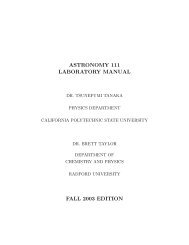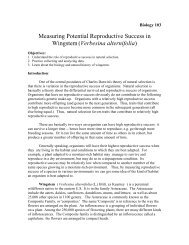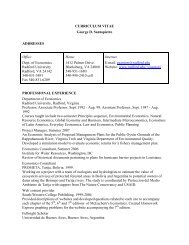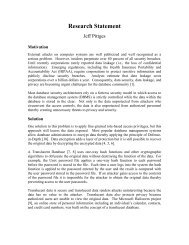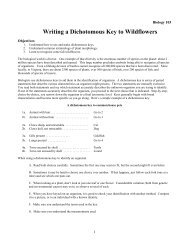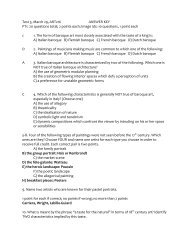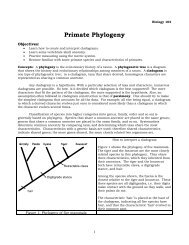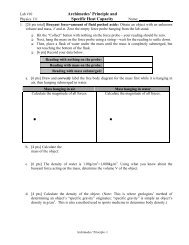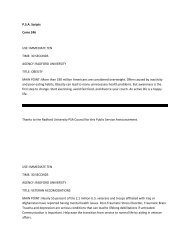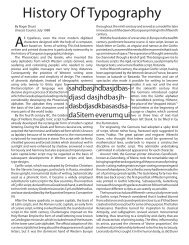Parallel Lines Cut by a Transversal
Parallel Lines Cut by a Transversal
Parallel Lines Cut by a Transversal
You also want an ePaper? Increase the reach of your titles
YUMPU automatically turns print PDFs into web optimized ePapers that Google loves.
4) 102 and are vertical angles<br />
5) 45 and are a linear pair<br />
6) 135 and are vertical angles<br />
7) 135 and are corresponding angles<br />
8) 45 and are linear pairs<br />
9) 33 triangle sum conjecture<br />
10) 33 and are vertical angles<br />
a. When going over the solutions and explanations to these problems,<br />
students may offer solutions before it is valid to do so. Remind students<br />
that even though they may “know” the measure of an angle, in order to<br />
give that measure, they must have a valid explanation.<br />
b. Discuss solutions one at a time with the class. Let the students<br />
determine <strong>by</strong> discussion which solutions are correct and valid.<br />
c. When going over problem 9 ask students if anyone solved the problem<br />
using the triangle sum conjecture. Lead this into a discussion of what is<br />
known about triangles GJN and HJM. (They are similar). How do we<br />
know this?<br />
d. When going over problem 10, if no student offers this as a manner of<br />
solving the problem, discuss the exterior angle of a triangle theorem.<br />
B. Proving lines parallel. (45 – 60 minutes)<br />
1. Discuss with students that they already have all the knowledge necessary,<br />
(the properties discussed in the focus activity and from the exercise above),<br />
to prove two lines cut <strong>by</strong> a transversal are parallel. Tell students they will<br />
spend the next part of class proving this concept.<br />
a. Give the students the following postulates. Explain that they will use<br />
these postulates and several of the properties of parallel lines to prove<br />
several theorems.<br />
i. Corresponding Angles Postulate: If two coplanar lines are cut <strong>by</strong><br />
a transversal so that two corresponding angles have the same<br />
measure, then those lines are parallel.<br />
ii. <strong>Parallel</strong> <strong>Lines</strong> Postulate: If two coplanar lines are parallel and<br />
are cut <strong>by</strong> a transversal, corresponding angles have the same<br />
measure.



